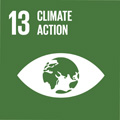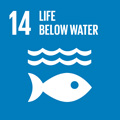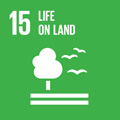- Docente: Michaela De Giglio
- Credits: 6
- SSD: ICAR/06
- Language: Italian
- Teaching Mode: Traditional lectures
- Campus: Bologna
- Corso: Second cycle degree programme (LM) in Geography and Territorial Processes (cod. 0971)
Learning outcomes
At the end of the course students will acquire the following skills: digital image processing, the extraction of thematic information about several land and environmental aspects (geomorphology, urban, connected to cultural heritage, monitoring, etc..) and the management of remotely sensed data in remote sensing and GIS softwares.
Course contents
MODULE 1: BASIC PRINCIPLES OF REMOTE SENSING
- Remote Sensing introduction: definition, general system aspects, applications. Physical principles (from radiant energy to radiance, electromagnetic wave, wavelength, electromagnetic spectrum).
- Energy interactions with the atmosphere (reflection, transmission and emission). Atmospheric windows. Spectral signature: definition and description of water, soils and rocks, vegetation signatures.
- Observation tools: platforms, orbits, active and passive sensors, acquisition parameters (IFOV, Swath, satellite elevation angle, sun elevation angle), cross-track, cross-track systems, matrix systems. Acquisition Mode.
- Description of sensors, digital images, multispectral shooting, data display, geometric resolution, spectral resolution (pan-sharpening), radiometric resolution, time resolution.
MODULE 2: DISTURBANCES AND CORRECTION
- Radiometric and geometric image distortions. Geometric distortion sources (earth bending, rotation, altitude variation, speed, trim, panoramic distortion).
- Parametric and non-parametric geometric correction models (notes). Orthorectification (DTM), georeferencing. Main current missions.
MODULE 3: CLASSIFICATION
- Gaussian distribution.
- Classification theory. Pixel classification, supervised classification (preliminary steps, classification algorithms).
- Main supervised algorithms (minimum distance from the average, maximum likelihood, support vectore machine and others); Hard and soft algorithms (Bayes, Fuzzy notes).
- Unsupervised classification techniques (cluster, k-means, isodata). Pixel-oriented classification.
- Accuracy evaluation.
- Machine learning notes.
- PCA, image enhancement techniques, vegetation index.
Readings/Bibliography
Attending and non attending students
Lecture notes by the teacher.
Further reading:
Principi e metodi di telerilevamento. Pietro Alessandro Brivio, Giovanni Lechi, Eugenio Zilioli. Città studi edizioni.
Basics of Geomatics. Mario A. Gomarasca. Springer.
Teaching methods
On-line lessons and in presence lessons, practical exercises through the use of software
Assessment methods
Attending and non attending students
Oral test. During the exam, the professor will assess the candidate's comprehension and cross knowledge of the topics covered by the program. Also, the student will be required to apply the remote sensing fundamental concepts to concrete cases and to make independent judgements. Finally, the Professor will verify the acquisition of basic technical terms that characterize this science. To access the exam, the student must create a map by applying one ore more classification techniques on a digital satellite data (provided by the teacher).
Teaching tools
Educational laboratory of Geomatics/Informatic with individual PC workstations, Open Source and trade software for digital image processing; Open Source GIS software; projector
Office hours
See the website of Michaela De Giglio
SDGs




This teaching activity contributes to the achievement of the Sustainable Development Goals of the UN 2030 Agenda.
